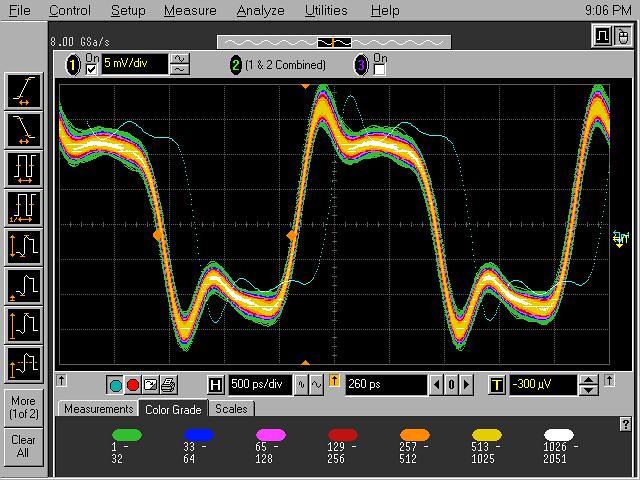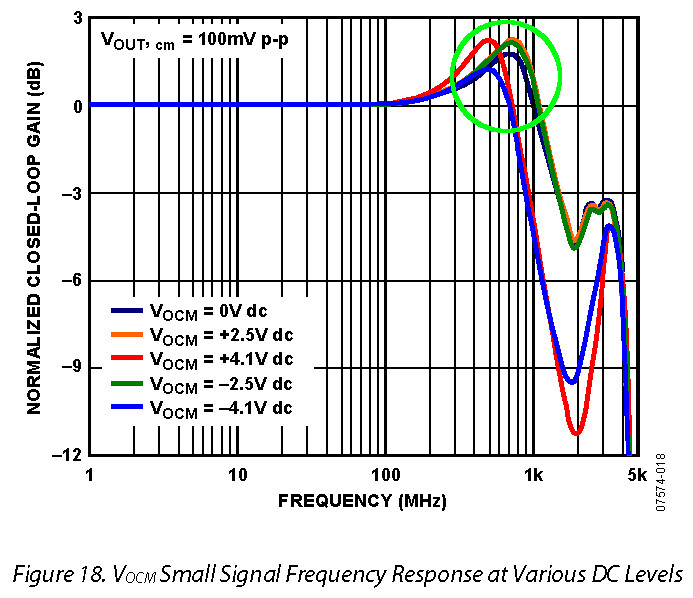I got a bit intrigued and rebuild the Elektor design but this time using 0402 capacitors & resistors to get better HF performance and an improved board layout which should minimise the HF peaking. This posting is an update of where I'm at now. Unfortunately my design also showed some hefty peaking so I didn't got very far. A 400MHz square wave for example:

Things get even worse for a 200MHz square wave. Time to pull out the spectrum analyser and do some sweeps. Now a differential probe should show the same signal amplitude regardless the polarity of the input signal. Interestingly reversing the polarity of the input shows two entirely different traces. In one situation it peaks and in the other it drops. The effect seems to be the strongest between 700MHz and 800 MHz. A CMMR (common mode rejection ratio) measurement also shows poor performance in the same frequency range.

This turned into a bit of a head scratcher. The simulation (using the ADA4927 model from Analog Devices) doesn't show this behaviour at all and I did not manage to find the cause in the circuit board layout. It has to be something in the amplifier which isn't in the pspice model!
At one point this graph in the ADA4927 datasheet the caught my eye:

This shows the common mode amplification with peaking in the 750MHz region! And since the ADA4927 is not used differentially but as a common-mode amplifier this graph just explains everything. Some further research showed me that all so called fully differential amplifiers will suffer from this behaviour because the amplifier for the common mode has a poor frequency response. IMHO the fully differential amplifier are simply not suitable for use in a differential probe if the output is used in a single-ended way.